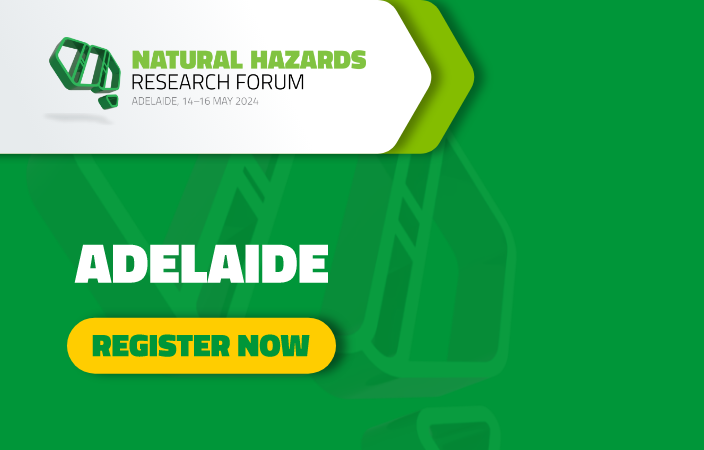
Our network
We work with many organisations, including academic, emergency management, private sector and government organisations, agencies and associations.

We work with many organisations, including academic, emergency management, private sector and government organisations, agencies and associations.
The Centre is developing a coordinated national research effort in natural hazards including bushfire, flood, storm, cyclone, earthquake, coastal inundation and tsunami. Our knowledge network extends to many organisations and universities, creating research that keeps Australian communities safe from natural hazards.
The research program is conducted under the direction and involvement of the Centre's Participants: those organisations or entities (or representative thereof) that have been contracted through a Participant Agreement with the Centre. See tabs below for a list of our currently signed Participants, with the exception of Research and Collaborator organisations.
Some organisations will appear in two or more categories below, as we often work with organisations in different capacities, for example as both end-users and research providers.

This project aims to identify the strategies and recommendations that emergency services agencies could adopt in order to improve the mental health and wellbeing of their workforce. The focus of this research is on barriers to help-seeking by workers who have developed, or are at risk of developing, serious mental health conditions, such as post-traumatic stress disorder, as a result of their work experiences.

Remote sensing of bushfire fuel has been identified as a way of objectively measuring fuel to assess risk and make predictions of fire spread. This project proposes to measure bushfire fuel using remote sensing and the effects of fuel on fire behaviour. The research will focus on a specific fuel type which has been identified by end-users in South Australia as difficult to predict with current fire behaviour models.

This PhD project will use the University of New England's state of the art virtual reality and eye tracking laboratories to experimentally test the psychological factors that might influence the decision to drive into floodwater. The project will also examine the protective effects of risk treatments such as warning signs, penalties and safety education.

The overarching goal of the research is to reduce community’s vulnerability to flood risks by enhancing risk reduction capacity of the built environment. The possible outcomes of the research include critical review of flood risk management policy and practices and identification of “fit for purpose” policy guidelines to deal with dynamic change. The research context is Melbourne, Victoria and the research findings will offer empirical data resources for end-user agencies.

This PhD project will involve experimental/physical modelling scenarios for firebrand transport of varying number, mass, length, surface to volume ratio, etc. under various wind conditions; statistical analysis of the transport to determine some dynamic transport equations; obtain firebrand creation probability and ignition probabilities from other PhD studies; incorporation of firebrand creation probability, dynamic transport and ignition probabilities into an operational model; and comparison of the fire parameters to experimental/physical scenarios.

This project will examine the consequences of recent unprecedented landscape scale bushfires in northern New South Wales on a world heritage listed ecosystem renown for its diversity of ancient plant lineages which exhibit few obvious adaptations to increasing fire activity.

Heather's PhD is providing empirical measures and modelling of resources that are used for suppression of campaign fires. Her research is examining historical data by evaluating recent campaign fires in Australia. Operational data is being used to generate models of current suppression resourcing and tactics. These models will be used to evaluate various resource scenarios in simulation studies.

This research will determine the different options which exist for providing a compliance/enforcement program to address a significant gap in bushfire protection.

